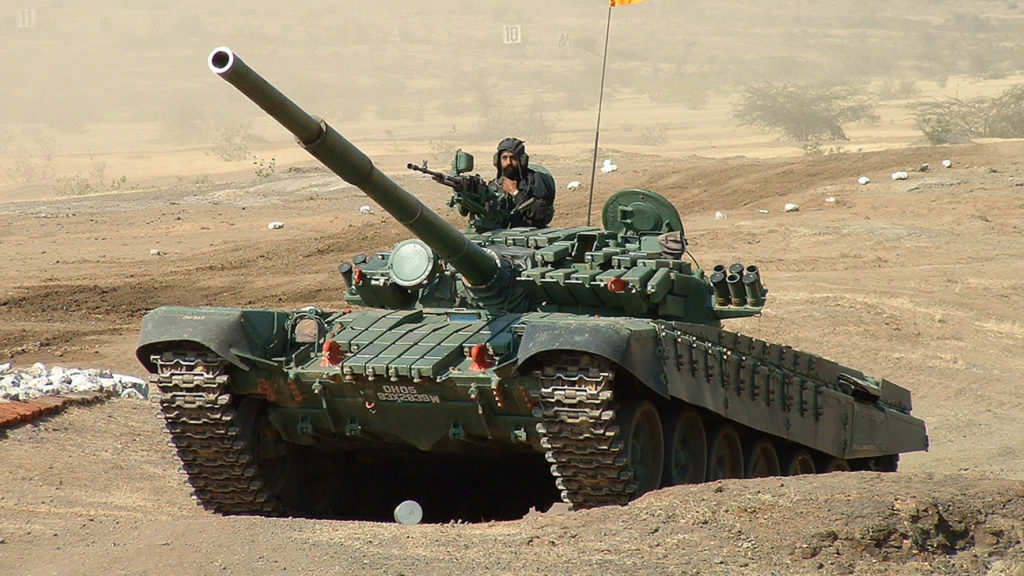The Indian Ministry of Defence has approved the development and production of over 500 indigenously-built future combat vehicles.
A total of 590 Future Ready Combat Vehicles (FRCV) will be built under the project’s Make-I category, which provides for up to 70 percent of government funding for prototype development.
The project’s design and development should have at least 50 percent indigenous content, as the defense ministry specified in a project brief.
Future Ready Combat Vehicle
The vehicle will be developed on a modular concept to serve as the base platform of at least 11 tracked vehicles, including a main battle tank, according to The Diplomat.
Other possible FCRV variants are “light tracked, wheeled, bridge layer, and trawl tanks, self-propelled howitzers, air defense guns, artillery observation post and engineering reconnaissance vehicles, and armored ambulances.”
The project’s main thrust will replace the Indian Army’s over four-decade-old Russian-origin T-72 main battle tank, beginning in 2030, according to The Hindu.
The outlet reasoned that advancing asymmetric anti-tank technologies, such as combat drones and top-attack and loitering munitions, have increased the vulnerabilities of older tank models that lack more advanced mobile protection systems.
Main Features
The four-crew FRCV will be powered by a 1,500-horsepower engine and should be transportable by aircraft, ship, rail, and road transport.
The 55-ton tank will have a minimum range of 400 kilometers (248 miles) in cross-country/desert terrain and 500 kilometers (310 miles) on paved roads.
The tank’s expected life span is between 35 and 45 years.
Main Weapons
The tank’s main gun will be of 120 mm or above caliber, capable of firing three types of rounds — armor piercing fin stabilized discarding sabot, high explosive anti-tank, and high explosive — in static and dynamic mode, day or night.
The shells’ minimum range should be 2,500 meters (8,202 feet), 1,600 meters (5,249 feet), and 5,000 (16,404 feet) meters in direct and 10,000 meters (32,808) in indirect roles.
The gun should also be able to fire anti-tank and anti-helicopter missiles at a minimum range of 500 meters (1,640 feet).
Secondary Weapons
The combat platform’s secondary weapons will be a coaxial machine gun with a minimum range of 1,800 meters (5,905 feet) and an anti-aircraft machine gun capable of striking an aerial target at a minimum range of 1,500 meters (4,921 feet) and a ground target at 2,000 meters (6,561 feet).
The tank will feature an AI-enabled fire control system capable of switching into hunter-killer, killer-killer, and automatic target detection and tracking system modes, depending on the situation.
The fire control system will be integrated with the Battlefield Management System and Identification of Friend and Foe to generate a common fire control picture.
Tank Protection
To defeat evolving anti-tank capabilities, the ministry has specified an Active Protection System (APS) for the tank comprising a dedicated Top Attack Protection System.
The APS should include soft and hard kill systems to detect and disrupt laser designation, ranging, missile launch, missile homing, and destroy and deflect incoming projectiles.
Other protection elements include explosive reactive armor; scalable, non-explosive reactive armor; and belly protection against improvised explosive devices and mine blasts of at least 15 kilograms (33 pounds) of TNT.
It should also include chemical, biological, radiological, and nuclear protection, an instant fire detection and suppression system, a missile warning system, and stealth and signature management to suppress acoustic, visual, infra-red, thermal, and electromagnetic signatures by 50 percent in the observation range.



